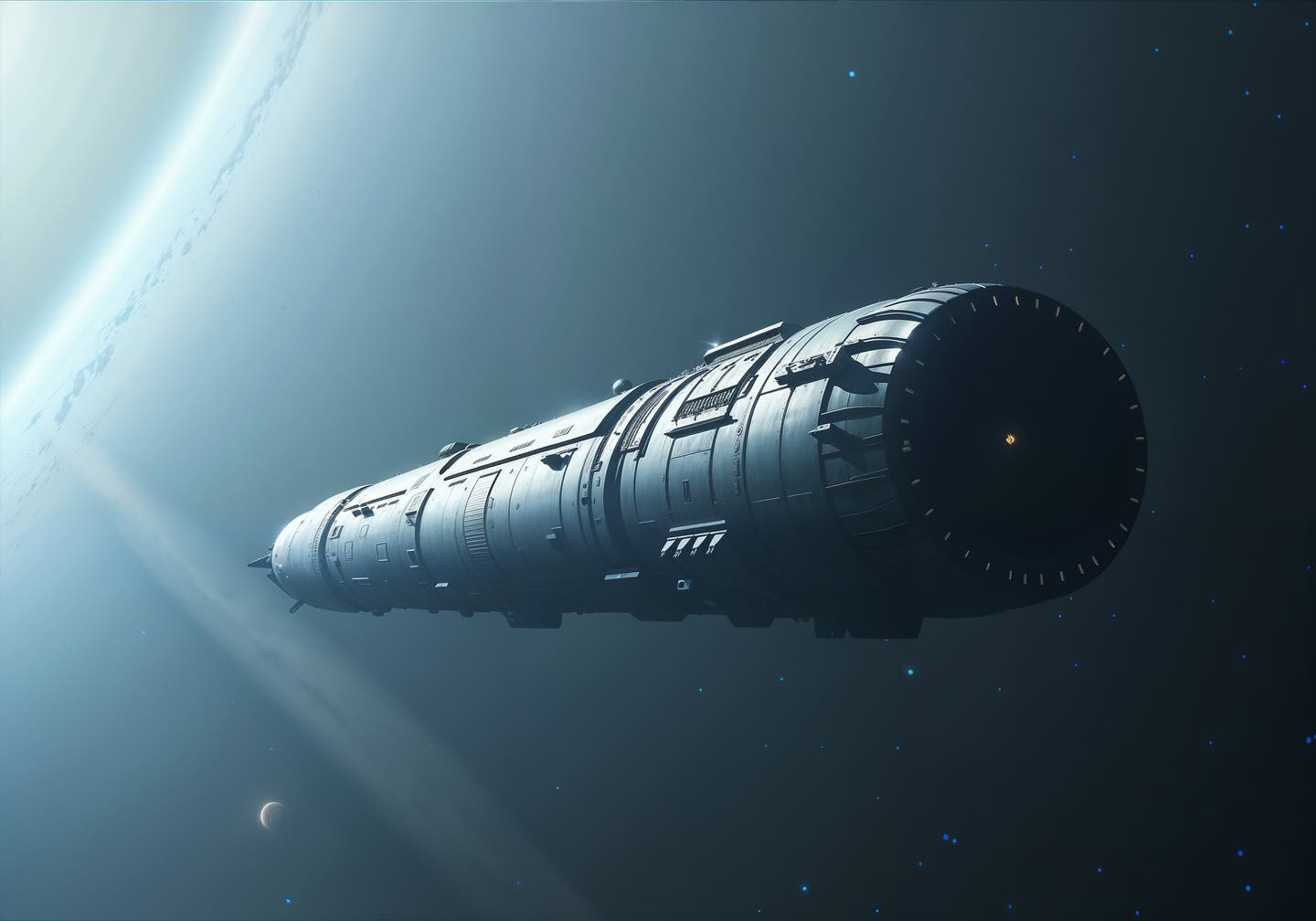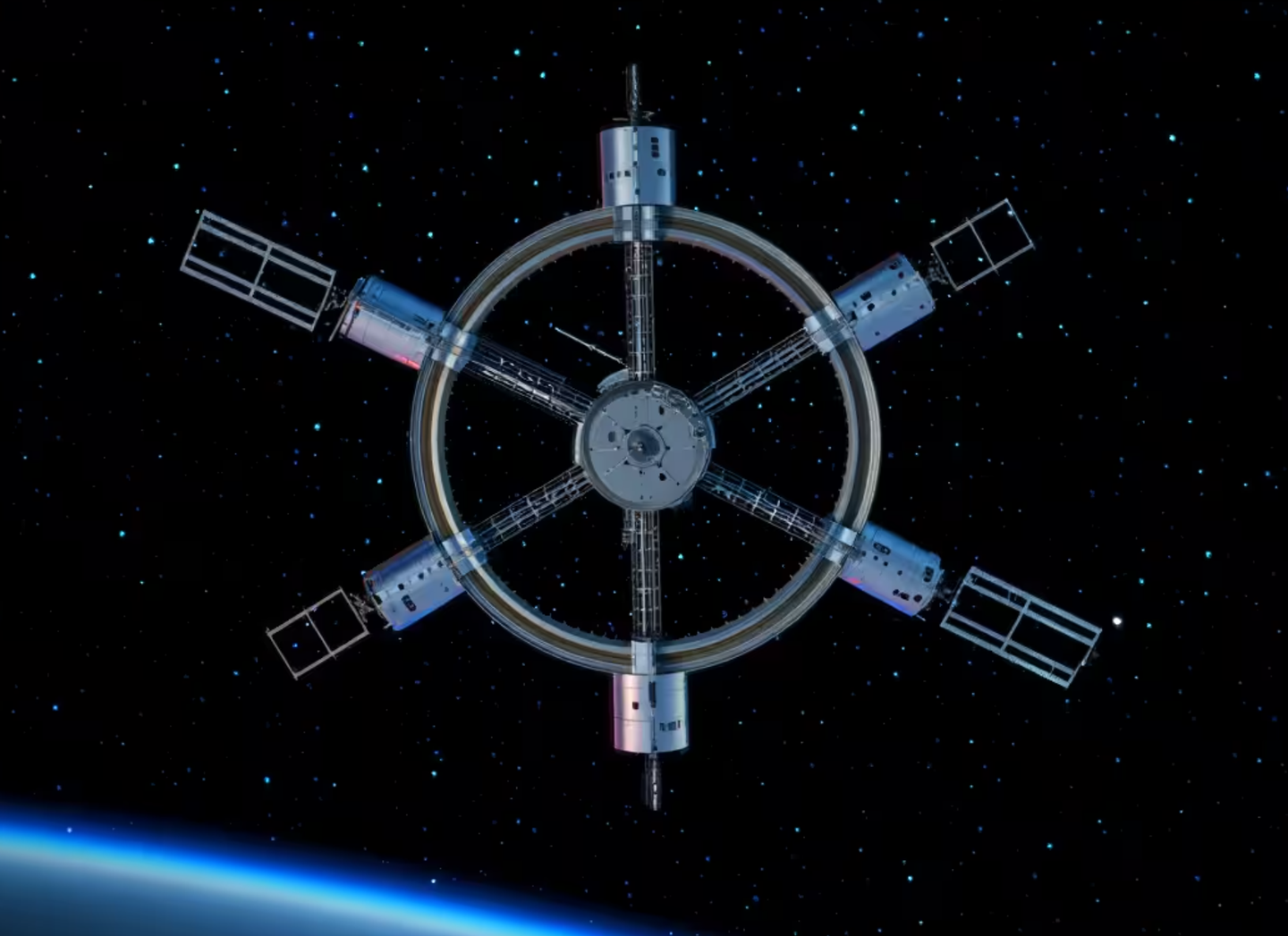Chrysalis Starship could take 2,400 passengers on a 400 year voyage to the planet Proxima b
Italian researchers design Chrysalis, a 400-year generation ship concept to reach Proxima b with thousands aboard.

Generation spaceship Chrysalis. An Italian team’s Chrysalis starship design could carry generations of humans to Proxima b over a 400-year journey, reshaping space exploration. (CREDIT: Chrysalis Planning and Design Team)
Four centuries from launch, a vast spacecraft could deliver thousands of people to a world orbiting the nearest star. The concept, called Chrysalis, is designed for one purpose — to take humanity to Proxima b, a rocky planet in the Proxima Centauri system that may be able to support life. Its creators picture a self-sufficient habitat where generations would live, work, and die before their descendants ever see the new horizon.
This isn’t science fiction. It’s a serious design proposal from an Italian team — Giacomo Infelise, Veronica Magli, Guido Sbrogio, Nevenka Martinello, and Federica Chiara Serpe — that won the Project Hyperion Design Competition run by the Initiative for Interstellar Studies (i4is). The challenge asked architects, engineers, and social scientists to create a realistic multigenerational ship capable of reaching another star using current or near-future technology.
The Chrysalis design blends imagination with engineering detail. The jury praised it for its “system-level coherence and innovative design of the modular habitat structure” and for the way it draws inspiration from classic “world ship” concepts of the 1980s.
Building a home for centuries in space
At its heart, Chrysalis is a rotating cylinder more than 58 kilometers long, with a mass of 2.4 billion metric tons. The rotation would create artificial gravity to reduce the muscle and bone loss that happens in weightlessness.
The structure would be arranged like a Russian nesting doll, with layers around a central core. Each shell would have a specific function, from growing food to storing resources.
The outermost layer would act as a shield against micrometeoroids and radiation, protecting the inner habitats. This layer would also serve as a warehouse, stocked with tools, spare parts, and raw materials, likely managed by robotic systems to reduce human labor.
Moving inward, the next shell would hold industrial facilities — recycling plants, manufacturing workshops, and even pharmaceutical labs. Closer still would be housing blocks, designed with air circulation systems and temperature control for comfort.
Related Stories
- Relativistic electron beams: A new frontier in interstellar travel
- Race to Sedna: New fusion and solar sail engines could reach distant world in 10 years
Inside that would be communal spaces — parks, schools, libraries, and hospitals — for both daily life and social connection. The layer nearest the core would produce food, maintaining ecosystems with plants, fungi, microbes, insects, and livestock. Diverse environments, from tropical forests to boreal zones, would preserve biodiversity.
At the very center, the core would house communication systems and shuttles capable of ferrying passengers down to the surface of Proxima b once the journey ends.
The challenge of time and distance
Proxima b lies 4.24 light-years away — about 39 trillion kilometers.
Chrysalis is designed to travel at a tenth of the speed of light, reaching its destination in roughly 400 years. That includes a year to accelerate at the start and another to slow down before arrival. For comparison, NASA’s Parker Solar Probe — the fastest spacecraft ever built — would still fall short of the halfway mark after more than two centuries of flight.
The planned propulsion system is a Direct Fusion Drive using helium and deuterium isotopes. This concept, though untested, could generate both thrust and electrical power. Such a system might shorten the travel time, but it depends on breakthroughs in nuclear fusion technology that scientists are still working toward.
Even before launch, the project envisions a dramatic training phase. Prospective passengers — the first generation aboard — would spend 70 to 80 years in an isolated Antarctic habitat. This would test their ability to live in close quarters, adapt to a self-contained environment, and maintain psychological health.
Life aboard Chrysalis
A journey lasting centuries would need a carefully managed population. Birth rates would be controlled to keep numbers at about 1,500 people, even though the ship could hold up to 2,400. This would help ensure that food, water, and living space remain sufficient for all.
Governance would be a partnership between human decision-makers and artificial intelligence. According to the design team, AI could strengthen social resilience, help pass knowledge between generations, and give leaders a deeper understanding of the ship’s long-term needs.
While daily life would revolve around work, education, and community, there would also be unique experiences. The Cosmo Dome at the front of the vessel would offer a microgravity zone with sweeping views of deep space. Passengers could float weightless while watching the endless stars.
The design also emphasizes culture and continuity. Knowledge transfer systems — from formal education to preserved archives — would ensure that the descendants of the original travelers retain the skills and history needed to survive and thrive when they finally reach their destination.
From concept to possibility
Despite its detail, Chrysalis remains a concept. Nuclear fusion drives, sustainable closed-loop ecosystems, and century-spanning governance systems are still works in progress.
Yet history shows that once-impossible goals can be reached. Landing on the Moon was once dismissed as fantasy. Now, some scientists see interstellar migration as a matter of “when,” not “if.”
Competitions like Project Hyperion aim to push that vision forward. By demanding realistic planning for food production, waste recycling, artificial gravity, and social stability, these challenges help researchers explore the real obstacles of star travel.
The winning Chrysalis design also won its five-member team a $5,000 prize — a small sum compared to the scale of its ambition.
The Initiative for Interstellar Studies hopes that studies like this will seed future breakthroughs. A ship like Chrysalis might never be built exactly as imagined, but its ideas could influence spacecraft architecture, life-support systems, and long-duration mission planning for decades to come.
If humanity ever leaves the solar system, the descendants of such work may be the first to see another sun rise over an alien sky.
Past Studies and Findings
The idea of a generation ship is not new. In the 1960s, physicist Robert Enzmann proposed a massive interstellar vessel powered by frozen deuterium fuel. His concept imagined thousands of people traveling for centuries inside a rotating habitat. While purely theoretical, the Enzmann Starship helped shape early thinking on the social and engineering challenges of multi-century space travel.
In more recent decades, studies from NASA’s Advanced Concepts program and European research groups have explored closed-loop life support systems and artificial gravity structures. These works emphasized the importance of self-sustaining ecosystems for long-term missions. Experiments aboard the International Space Station have shown that plants, microbes, and even small animals can survive and reproduce in microgravity, though the conditions are far from perfect for human health.
The Project Hyperion effort itself is rooted in a series of studies carried out by the Initiative for Interstellar Studies. These studies reviewed the technical and social feasibility of sending human crews to nearby stars using current or near-future technology. Researchers examined propulsion methods, habitat architecture, and social models for multi-generational voyages. They found that while propulsion remains the greatest technical hurdle, social stability over centuries is equally challenging.
Other related research includes computer modeling of closed societies in confined environments, often using simulations of Antarctic stations, submarines, or even Mars habitat analogs. These studies reveal that psychological health, cultural continuity, and governance systems are as critical to mission success as fuel and engineering.
Practical Implications of the Research
While a 400-year journey to another star is far beyond today’s launch schedules, concepts like Chrysalis push scientists and engineers to tackle problems with immediate benefits. Designing closed-loop life support can improve sustainability on Earth, reducing waste and recycling water and air more efficiently. This technology could be applied to remote research stations, submarines, or even cities aiming for near-zero environmental impact.
Artificial gravity research could improve our understanding of how rotation affects health. This knowledge could help astronauts on long-duration missions to Mars or beyond, preventing bone and muscle loss. Similarly, advances in nuclear fusion propulsion could revolutionize energy production on Earth, offering cleaner, more abundant power.
Social science insights from such projects also have practical value. Studying how to maintain social harmony, education, and governance in closed environments can inform disaster preparedness, isolated community management, and long-term habitation planning on Earth and in orbit. By imagining the needs of a distant voyage, researchers gain tools to solve pressing challenges closer to home.
If the technology matures, the work behind Chrysalis could one day make human migration beyond the solar system possible. This would represent not just a leap in exploration, but a survival strategy — ensuring humanity has a future even if Earth becomes uninhabitable.
Note: The article above provided above by The Brighter Side of News.
Like these kind of feel good stories? Get The Brighter Side of News' newsletter.



